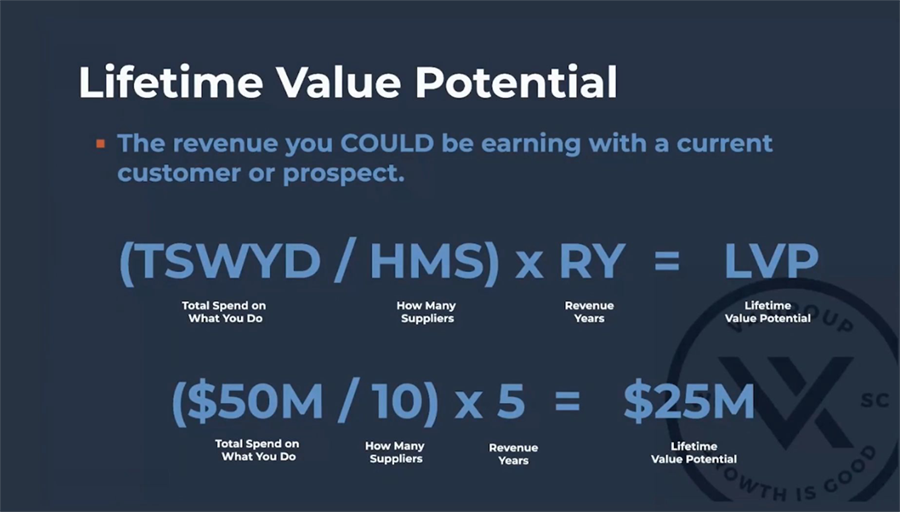We all know that some customers are great customers, while some aren’t. One way to differentiate the two is through lifetime value.
Lifetime value is the potential revenue you could earn from a current customer or prospect. We’ve developed a calculator to estimate lifetime value and we walk you through how to use it below.
The first thing to look at when calculating lifetime value is the total amount a prospect spends with your business. Then, consider how many suppliers that prospect has that do the same type of work. Finally, take the total spend divided by the suppliers and multiply it by your revenue years to get the lifetime value potential.
For example, let’s say you have a current or potential customer that spends $50 million on a product or service your company supplies, but you are just one of 10 companies this customer contracts with for the same service. You hope to retain this customer for the next five years.
Using the calculator, you’ll see your share of their total business amounts to $5 million a year ($50 million/10 clients) and over the next five years the lifetime value of this client will equal $25 million.
Calculating a market share for specific clients shows the potential of uncaptured revenue.
When that number is high, that indicates the types of existing customers to invest more energy into to grow your business. If a share number is not significant, it helps you realize when you are getting all you can from that relationship.
While you still want to provide the excellent service that you have been, you know now to not invest extra time and money into something that isn’t going to grow your business.
If you are unsure about where to start when calculating lifetime value, we can help you identify the ideal customers. Profiling existing customers can help target new ones that would be a good fit. We also help our clients find aspirational accounts.
Start today by downloading our free worksheet and contact us for help with finding and keeping high lifetime value customers.
Finding, landing, growing, nurturing new customers is more difficult than developing existing ones. The trick is knowing which ones you should invest more time on to unlock that unrealized lifetime value.






